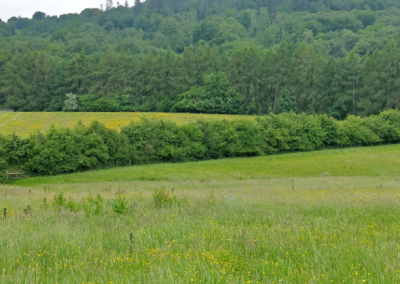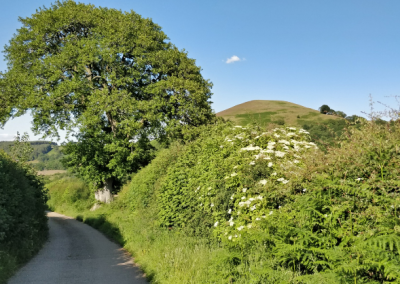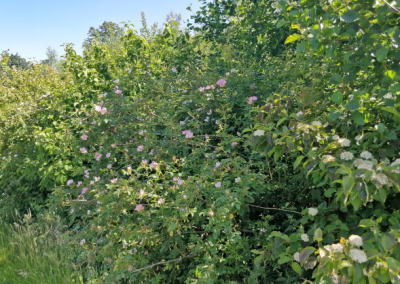Hedgerows at Pollardine
By Fiona Gomersall
In 2017, we were lucky enough to be one of the Shropshire Wildlife Trust’s selected sites for a plant species survey. Fiona Gomersall carried it out and wrote this piece about our hedgerows.
Over the years Jane and Roger Hulton-Harrop restored and re-instated long lengths of hedgerow throughout their farm. They will have planted hundreds of trees in the process, not only to strengthen the hedgerows but also to extend their woodlands. These hedgerows act as strong ‘linear corridors’, allowing wildlife like insects and birds to move from place to place in safety to find food and mates.
Native species like hazel, holly, hawthorn, maple and blackthorn were planted along with spindle, guelder-rose, dogwood, oak, ash and beech. Some of the hedgerows are very old and have other species like grey and goat willow, elder, black poplar, rowan, wych elm and sycamore growing amongst the more recently planted species. The older hedgerows are also enriched by climbers and shrubby species like black bryony, bramble, honeysuckle, ivy and dog rose. These plants add colour in the form of flowers and fruit so, vital as food sources for our pollinators and birds. Where these species are allowed to flower and fruit as a result of sensitive management, the hedgerows are alive in spring and summer with bird song and the humming of insects. In the autumn activity continues as birds and small mammals feed off fruit, nuts and seeds produced by the diversity of these woody plants.
The well managed hedgerows, wide, dense and tall provide superb nesting habitat for small birds, many of which are in severe decline all over Shropshire.



